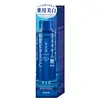What's inside
What's inside
 Key Ingredients
Key Ingredients

 Benefits
Benefits

 Concerns
Concerns

No concerns
 Ingredients Side-by-side
Ingredients Side-by-side

Tranexamic Acid
AstringentAllantoin
Skin ConditioningHydrolyzed Hyaluronic Acid
HumectantSodium Hyaluronate
HumectantCetyl Phosphate
EmulsifyingTocopherol
AntioxidantBacillus/Coix Lacryma-Jobi Ma-Yuen Seed/Soybean Ferment Filtrate
AntioxidantSecale Cereale Seed Extract
AbrasiveButylene Glycol
HumectantHydrogenated Castor Oil
EmollientPhenoxyethanol
PreservativeCitric Acid
BufferingBenzyl Benzoate
AntimicrobialCaprylic/Capric Triglyceride
MaskingSqualane
EmollientEDTA
Dipropylene Glycol
HumectantSodium Citrate
BufferingDiglycerin
HumectantXanthan Gum
EmulsifyingTranexamic Acid, Allantoin, Hydrolyzed Hyaluronic Acid, Sodium Hyaluronate, Cetyl Phosphate, Tocopherol, Bacillus/Coix Lacryma-Jobi Ma-Yuen Seed/Soybean Ferment Filtrate, Secale Cereale Seed Extract, Butylene Glycol, Hydrogenated Castor Oil, Phenoxyethanol, Citric Acid, Benzyl Benzoate, Caprylic/Capric Triglyceride, Squalane, EDTA, Dipropylene Glycol, Sodium Citrate, Diglycerin, Xanthan Gum
Ascorbyl Glucoside
AntioxidantTranexamic Acid
AstringentCeramide AP
Skin ConditioningOryza Sativa Bran Extract
Skin ConditioningPaeonia Officinalis Flower Extract
TonicSecale Cereale Seed Extract
AbrasiveGlycine Soja Extract
Skin ConditioningHydrolyzed Conchiolin Protein
Skin ConditioningHydrolyzed Silk
HumectantBis-Ethoxydiglycol Cyclohexane 1,4-Dicarboxylate
EmollientButylene Glycol
HumectantGlycerin
HumectantPotassium Hydroxide
BufferingHydrogenated Castor Oil
EmollientHedta
AbsorbentPolysorbate 20
EmulsifyingSodium Citrate
BufferingCitric Acid
BufferingPolyvinylalcohol Crosspolymer
Sodium Metabisulfite
AntioxidantDehydroacetic Acid
PreservativePhenoxyethanol
PreservativeSodium Paraben
PreservativeWater
Skin ConditioningAscorbyl Glucoside, Tranexamic Acid, Ceramide AP, Oryza Sativa Bran Extract, Paeonia Officinalis Flower Extract, Secale Cereale Seed Extract, Glycine Soja Extract, Hydrolyzed Conchiolin Protein, Hydrolyzed Silk, Bis-Ethoxydiglycol Cyclohexane 1,4-Dicarboxylate, Butylene Glycol, Glycerin, Potassium Hydroxide, Hydrogenated Castor Oil, Hedta, Polysorbate 20, Sodium Citrate, Citric Acid, Polyvinylalcohol Crosspolymer, Sodium Metabisulfite, Dehydroacetic Acid, Phenoxyethanol, Sodium Paraben, Water
Ingredients Explained
These ingredients are found in both products.
Ingredients higher up in an ingredient list are typically present in a larger amount.
Butylene Glycol (or BG) is used within cosmetic products for a few different reasons:
Overall, Butylene Glycol is a safe and well-rounded ingredient that works well with other ingredients.
Though this ingredient works well with most skin types, some people with sensitive skin may experience a reaction such as allergic rashes, closed comedones, or itchiness.
Learn more about Butylene GlycolCitric Acid is an alpha hydroxy acid (AHA) naturally found in citrus fruits like oranges, lemons, and limes.
Like other AHAs, citric acid can exfoliate skin by breaking down the bonds that hold dead skin cells together. This helps reveal smoother and brighter skin underneath.
However, this exfoliating effect only happens at high concentrations (20%) which can be hard to find in cosmetic products.
Due to this, citric acid is usually included in small amounts as a pH adjuster. This helps keep products slightly more acidic and compatible with skin's natural pH.
In skincare formulas, citric acid can:
While it can provide some skin benefits, research shows lactic acid and glycolic acid are generally more effective and less irritating exfoliants.
Most citric acid used in skincare today is made by fermenting sugars (usually from molasses). This synthetic version is identical to the natural citrus form but easier to stabilize and use in formulations.
Read more about some other popular AHA's here:
Learn more about Citric AcidHydrogenated Castor Oil is created by adding hydrogen to castor oil. This helps stabilize the castor oil and raises the melting point. At room temperature, hydrogenated castor oil is solid.
Castor Oil helps moisturize the skin. It is rich in a fatty acid called ricinoleic acid. This fatty acid helps prevent moisture loss on the skin. This helps keep your skin soft and hydrated. Ricinoleic acid also has anti-inflammatory and pain reducing properties.
As a wax-like substance, Hydrogenated Castor Oil acts as an emollient. Emollients help keep your skin stay soft and smooth by creating a barrier. This barrier helps trap moisture.
Hydrogenated Castor Oil may not be fungal-acne safe. We recommend speaking with a professional.
Learn more about Hydrogenated Castor OilPhenoxyethanol is a preservative that has germicide, antimicrobial, and aromatic properties. Studies show that phenoxyethanol can prevent microbial growth. By itself, it has a scent that is similar to that of a rose.
It's often used in formulations along with Caprylyl Glycol to preserve the shelf life of products.
Secale Cereale Seed Extract is an exfoliant.
Sodium Citrate is the sodium salts of citric acid. In skincare, it is used to alter pH levels and acts as a preservative.
Its main functions are to maintain the pH of a product and neutralize metal ions.
The acidity of our skin is maintained by our glands and skin biome; normal pH level of skin is slightly acidic (~4.75-5.5).
Being slightly acidic allows our skin to create an "acid mantle". This acid mantle is a thin barrier that protects our skin from bacteria and contaminants.
Learn more about Sodium CitrateTranexamic Acid is best used for treating hyperpigmentation, discoloration, and melasma. It can also help build a stronger skin barrier.
Once applied, Tranexamic Acid starts decreasing inflammation from UV exposure. Tranexamic Acid also prevents our skin cells from meeting the pigment production cells.
Its brightening property makes it great at reducing the appearance of acne scars and marks.
Fun fact: Tranexamic Acid is also a medication used to reduce heavy bleeding.
This acid is derived from lysine, an amino acid.
Learn more about Tranexamic Acid